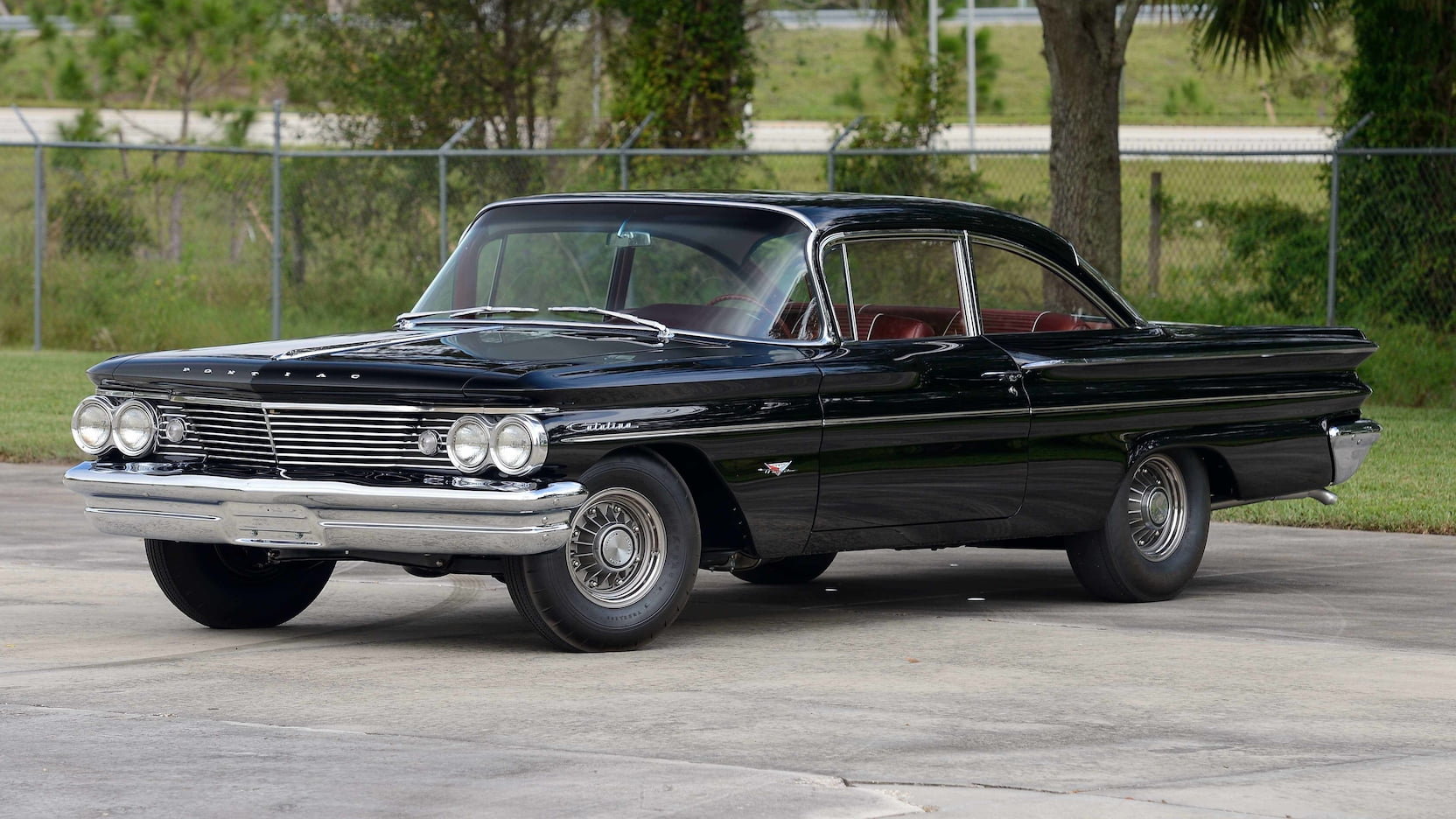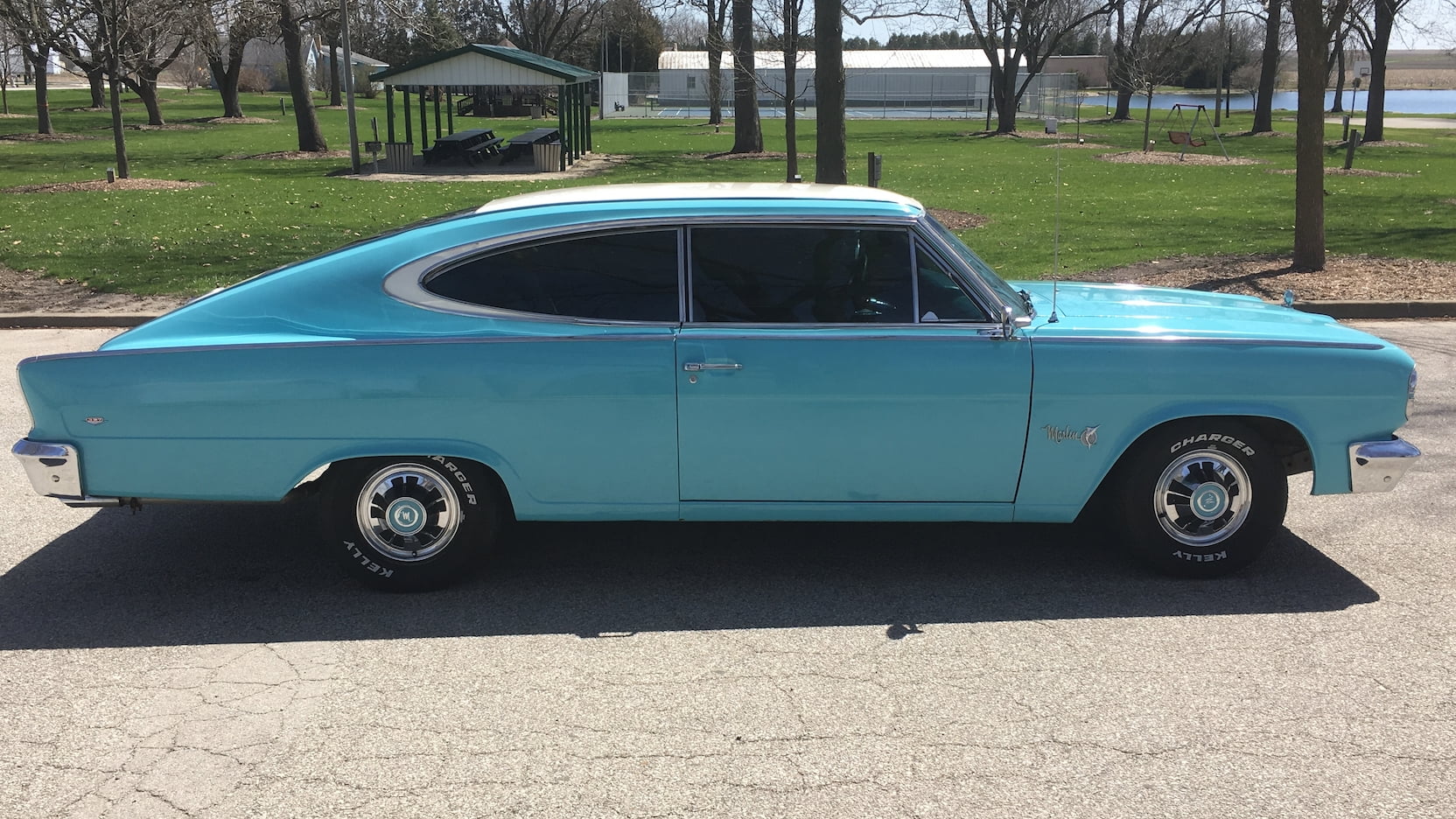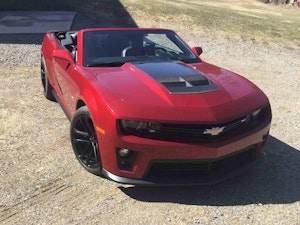Media | Articles
How the four-speed changed American Muscle
Nothing symbolized high performance during the muscle car era more than a four-speed gearbox. But it took a while for manufacturers to introduce such a transmission—some longer than others. While four gears were common on European sports cars, would-be racers on Main Street, USA soon discovered that a car was only as fast as its transmission allowed: most automatics were slush-boxes, and manual transmission cars had clunky column-shifted three-speeds. Eventually, American manufacturers finally began to catch up. Here’s how it went down across the domestic landscape:
Chevrolet

After a slow start, the Corvette was able to become a true contender in the world of sports cars in 1955. The addition of a four-speed in 1957 (not to mention fuel injection) gave the Corvette equal footing with exotics like the Mercedes 300SL. Full-size Chevrolets were left wanting until 1958, when a four-speed was introduced mid-year, delivered in the trunk for installation at the dealership. For 1959, the Borg-Warner T10 four-speed became a true factory-installed option.
Pontiac

The Wide-Track brand completed its performance metamorphosis in 1959, replete with newfound style and swagger that was an about-face from its image as a librarian’s car. Yet one thing was missing to match the thrust of the Tri-Power 420A 389 that made Pontiac a muscle contender: a proper transmission shifter on the floor. Starting in January 1960, a Borg-Warner T10 became available for various 389s, which coincided with the introduction of Super Duty equipment.
Marketplace
Buy and sell classics with confidence
Ford Motor Company

Ford offered a 360-horsepower solid-lifter 352 in 1960 with Super Stock racing in mind, but only with a three-speed on the column – not exactly a hot setup for drag strip excellence. Ford upped the ante in 1961 with the 390 featuring up to 401 horses, but that pesky transmission was getting in the way. “In the latter part of 1961, Ford generated documents indicating that a four-speed was available for dealer installation,” historian Charles Morris tells us. “There is speculation that this was done to make the four-speed conversion legal for NHRA Super Stock competition at the Nationals on Labor Day weekend.” For 1962, a factory-installed Borg-Warner T10 was available for 406-powered Fords and Mercurys.
Mopar

A special-order Pont-à-Mousson four-speed transmission was available for the 1960 Chrysler 300-F (approximately nine built), but a regular-production four-speed didn’t appear until the 1963 model year. The Borg-Warner T10 was available for Plymouths and Dodges with the 318, 361, and 383. Manual-transmission 426 Max Wedges had to make do with a three-speed until 1964 when Chrysler introduced its in-house A-833 transmission, which replaced the T10 for lesser engines.
Studebaker

The fabled “Loewy Coupe” had evolved into the 1956 Golden Hawk and then the 1962 Gran Turismo Hawk after Brooks Stevens nipped it here and tucked it there. But the swan song for the finned ’61 also marked the arrival for a Borg-Warner four-speed. It took the four-speed another year to arrive for the Lark, but 1963 was truly the year that muscle finally appeared for both series plus the Avanti via the R-series engines.
Buick

The company from Flint was known for producing the “Banker’s Hot Rod,” but Buick didn’t really have an inspired performance image that made them drag race favorites. In 1962, Buick paired an optional four-speed with the aluminum 215-cubic-inchV-8 for the “senior compact” Special, but it wasn’t quite muscle. Ditto for the 1963 full-size series, which featured an optional four-speed “for the folks who like to control their own performance via the stick-shift route.” The Wildcat with the 401/325 was probably the most desirable of the bunch, and true muscle would appear the next year when Buick offered a 425 with 2x4s.
Oldsmobile

Oldsmobile had a great start in 1949 with the Rocket V-8, but by the time Oldsmobile offered tri-carbs in 1957-58, its cars were not quite the speed machines they used to be—especially the ’58, which was somewhat overwrought (like all cars from General Motors at the time). Oldsmobile introduced a four-speed for the F85 in 1962, best exploited by the turbocharged Jetfire, but it doesn’t qualify as muscle. Full-size Oldsmobiles didn’t receive a four-speed until 1964, so the 1964 4-4-2 deserves the glory as Oldsmobile’s first hi-po four-speed.
AMC

Despite the stick-in-the-mud reputation, the early and mid-1960s were kind to American Motors thanks to contemporary redesigns of all three of its series. AMC grasped sporty trends like fastbacks and bucket seats, but a four-speed didn’t appear until 1966, when the Marlin and Classic/Rebel (and even the Ambassador) were available with a 270-horsepower 327; the American could be had with a peppy 290/225 with a four-speed.









